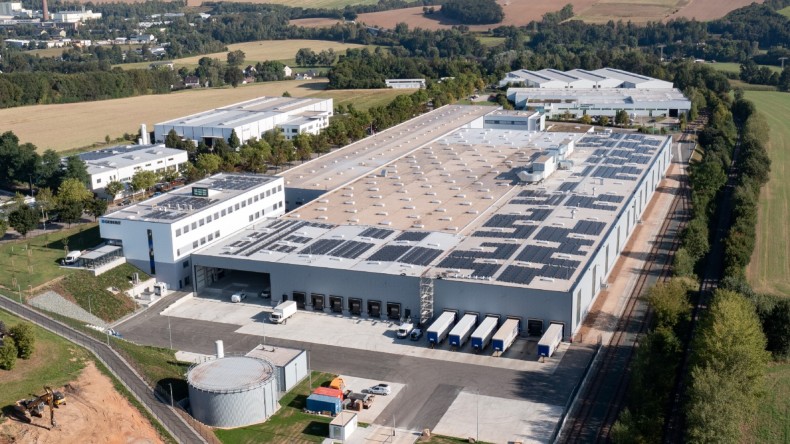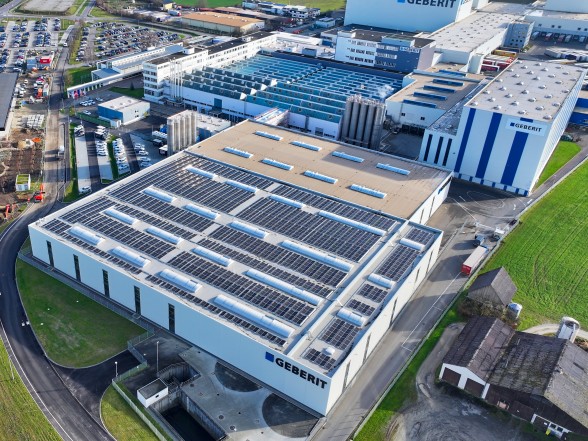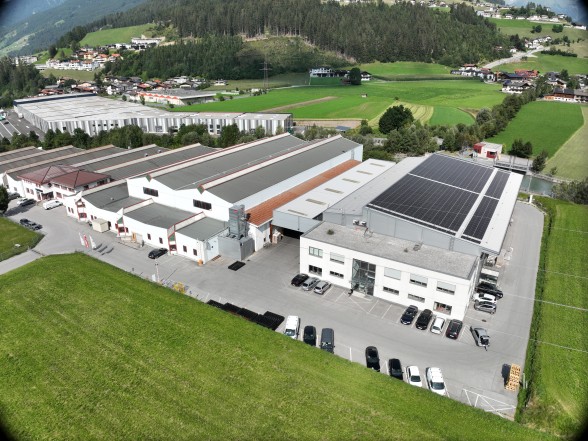Triple solar power
Photovoltaics at Geberit
The plant expansion in Lichtenstein not only increases production capacity but also provides renewable energy: a new photovoltaic system supplies the site with self-generated solar power. Following installations in Pfullendorf and Matrei, this is the third system to be connected to the grid in recent months.
The first rays of morning sunlight bathe the production halls in Lichtenstein (DE) in a golden glow. Where there were unused roof surfaces until recently, solar cells are now in operation – covering an area of around 10,000 m2. The photovoltaic (PV) modules were installed as part of the plant’s expansion. The centerpiece is the third hall for the fully automatic Duofix toilet frame production, which opened in 2025. At the end of April, the new PV system was connected to the grid.

Anchored in the strategy
Lichtenstein is the latest of three new PV systems at Geberit. Installations in Pfullendorf (DE) and Matrei (AT) have already been in operation since last year. This marks a further step for Geberit towards a sustainable energy supply. The CO2 strategy stipulates that the share of renewable energies in the entire operation will be further expanded, always taking into account the internal CO2 reference price and the economic efficiency.
“With our new photovoltaic system, we can generate around 870 MWh annually in Lichtenstein. According to simulations with data from 2023, we expect to use roughly three-quarters of that ourselves and feed the remaining 200 MWh into the grid,“ says Michel Landgraf, Infrastructure Team Leader in Lichtenstein. Anyone doing the math might wonder why not all of the self-produced solar energy is used.


More renewable energy in the grid
The answer is simple: the sun does not always shine with the same intensity. While operations require a constant supply of energy, the sun sometimes provides a lot of electricity and sometimes only a little. Therefore, additional electricity from the grid is needed during rainy weather or in the evenings, while on weekends (when no production takes place) electricity can be fed back into the grid. Either way, self-generated solar power contributes to environmental protection, as each kilowatt-hour fed into the grid increases the share of renewable energy.
The initial feedback from Austria, where the PV system has been in operation since September 2024, is positive: “So far, the system has been running smoothly and has met the forecast,“ says Markus Peer, Head of Production Engineering in Matrei. “Simulations suggest that we can produce around 250 MWh a year and consume about 80% of that ourselves. This covers about 25% of our total electricity needs. The surplus electricity is fed into the public grid and remunerated as green energy.“
